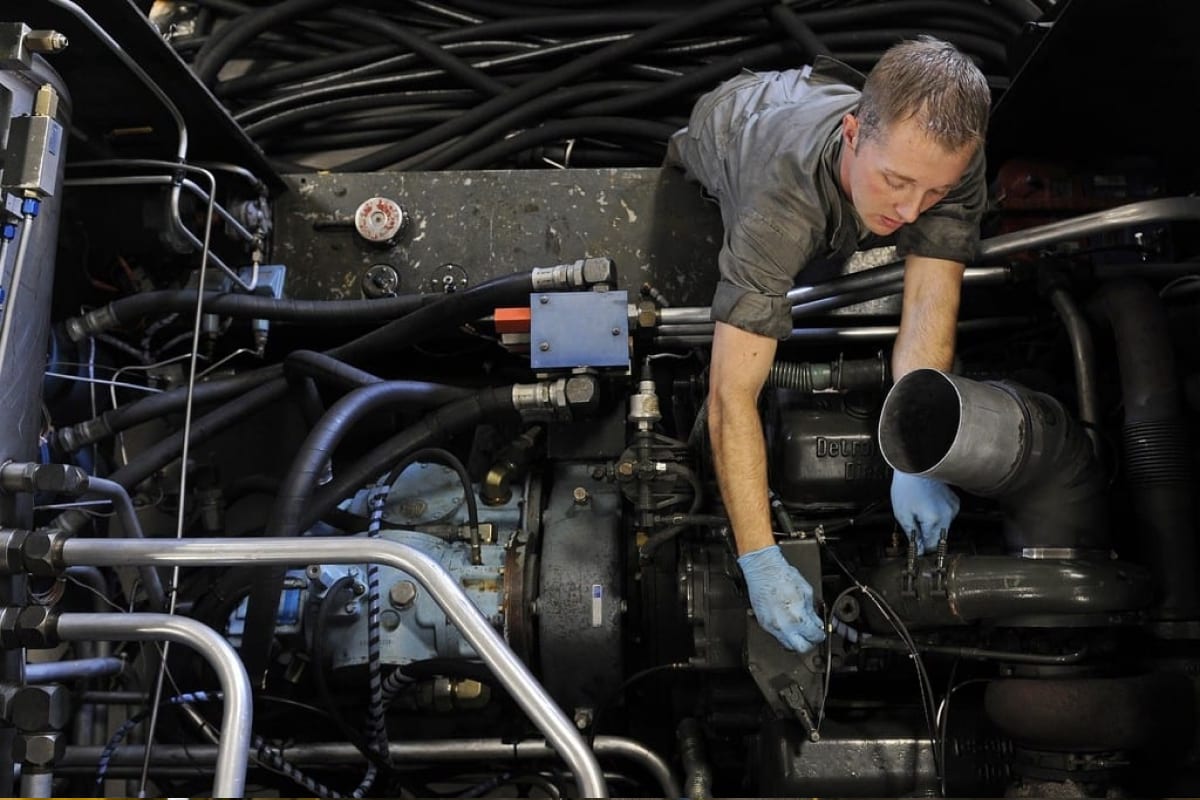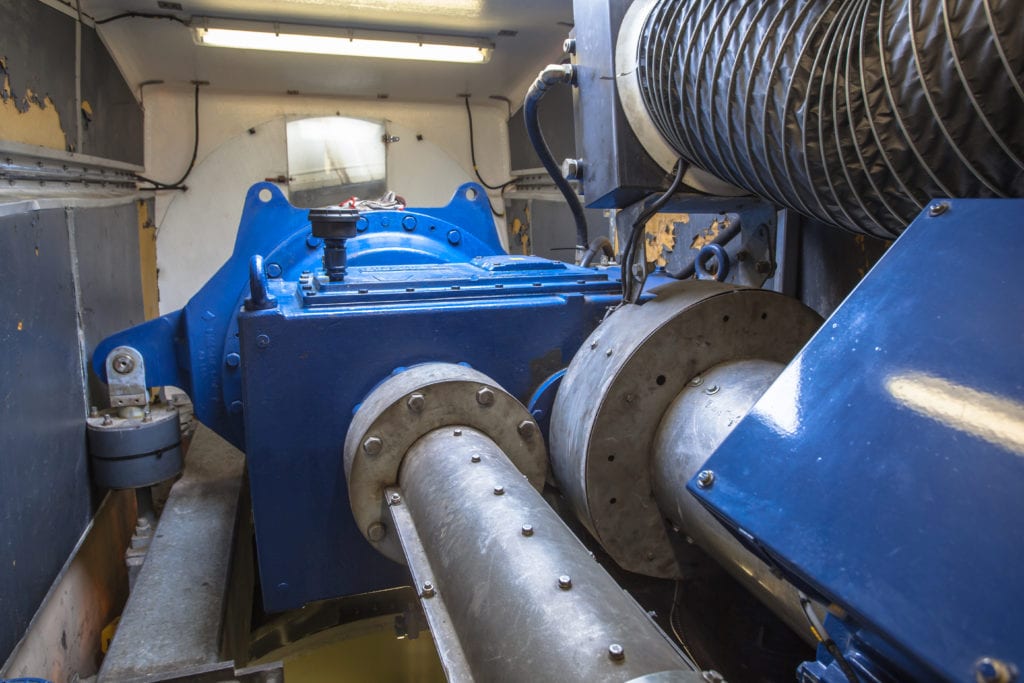Best Practices For Your Generator Maintenance Schedule [3 Things To Know]

Regardless of how little you’ve used a standby generator in a given year, it’s in your best interest to put together and adhere to a regular generator maintenance schedule.
Why?
Well, because a preventative generator maintenance schedule is a crucial safeguard in the event of power outages and other calamities that may cut access to your main residential or business power sources.
Related: Do you have a power outage contingency plan? If not, learn how to minimize the impact on your business during a blackout.
Whether you’re maintaining a backup generator for your home security system or to run your appliances in the case of a blackout, or you’re a business that has a standby generator onsite to maintain building code compliance for everything from standby lighting to fire protection systems, a proper generator maintenance schedule is a crucial thing to have — especially if you live in areas prone to severe inclement weather such as tropical storms and hurricanes.
With the right routine generator maintenance schedule, you can extend the life of your generator out to around 20 to 30 years. Even if you’ve only been utilizing a generator for the bare minimum of 30 minutes a week for routine exercise, you need a regular generator maintenance schedule to ensure that you can safely lean on it in case of an emergency. This is true regardless of whether your standby generator is powered by diesel or other gaseous fuel sources.

If you’re unsure of how to put together a generator maintenance schedule and what that entails, we’re here to help. This handy guide will walk you through all of the ins and outs of the process in full detail, from when to schedule maintenance service to what to do if you inherit a standby generator from a previous property owner.
Table of Contents
The basics on how to set up your generator maintenance schedule
The first step to putting together a proper regular generator maintenance schedule is to consider both your environment and the common workload of the generator within said environment. As you might expect, your standby generator will require servicing more frequently the more you use it. This includes everything from fuel replenishment to checking for loose wire connections and clamps.
Also, standby generators that are stationary in environments with less-than-ideal conditions require more attention than those which are maintained in ideal conditions. If your standby generator is installed in an area that’s very hot or very cold, prone to high humidity, or extremely dusty, you’ll need to be more diligent about putting together and sticking with a routine generator maintenance schedule.
For any standby generator to maintain peak efficiency and power, a multi-tiered generator maintenance schedule is necessary. There are maintenance tasks you will need to conduct on your own on both a weekly and monthly basis, and you’ll also need to schedule biannual and yearly service calls with a certified technician. Remember, these regular generator maintenance service calls may need to be pushed up if you end using your generator in an emergency or are maintaining it in an atypical environment.

This is especially true if you live in an area prone to tropical storms and wild winter weather. If this is the case, be sure to fashion your generator maintenance schedule around the beginnings of both hurricane season (August – October) and the winter weather season (late October – early March). For example, scheduling your biannual technician visits in late March/early April and late September/October will ensure that your backup generator is at peak operating capacity heading into each of these trouble seasons.
What does a regular generator maintenance schedule entail?
A preventative maintenance plan for a standby generator should usually be divvied up into short weekly self-inspections, more detailed monthly self-inspections, and technician visits on a bi-annual and yearly basis. Remember, frequent use of a generator may necessitate a higher frequency of self-inspections and technician visits.
To aid you in this process, we’ve put together a typical routine generator maintenance schedule for you to give you an idea of what each inspection should entail:
Weekly generator maintenance schedule
- Power on and run the generator, ideally with a no-load, automatic transfer switch exercise cycle.
- Double-check for any fluid leakage around the unit.
- Ensure that there are no device alarms and that the generator ran successfully.
- Make sure that the generator is properly filled with the correct fuel.
- Ensure the circuit breaker is secure and closed.
- Make sure that the generator is primed and ready for automatic startup. It should have an “Auto” mode function to make this happen.
Monthly generator maintenance schedule
- Do a full perimeter sweep of the generator to ensure there is no trash or detritus which could become a hazard in case of routine operation.
- If you have an enclosed generator, your regular generator maintenance schedule should always include a search for potential animal intruders inside the unit — most notably, rodents.
- Ensure the oil level of the generator is as close to full as possible without going over. The generator needs to be non-operational for at least 10 minutes or so to get an accurate reading.
- Double-check the generator overflow tank to ensure you have the correct amount of coolant in the unit.
- Ensure the battery is clean and free of corrosion. Also, make sure it’s in proper operating condition.
- Survey the generator for loosened wires and clamps, and double-check the unit’s terminals and wiring for signs of corrosion.
- If you own a diesel generator, be sure the fuel level is correct and that the water separators are properly drained.
- If you own a generator that’s powered by gas, double-check the piping for the fuel supply system for cracks or other signs of damage.
Biannual generator maintenance schedule (includes maintenance by a licensed service technician)
- Complete a full battery diagnostic check. This includes checking the battery’s specific gravity and electrolyte level, and ensuring all connectors and cables are in proper order.
- Examine the entire enclosure.
- Examine all drive belts.
- Examine coolant heater.
- Examine the entire exhaust system, including the exhaust pipe and the muffler.
- Examine the air induction pipes and all related connections.
- Examine the full AC wiring system and all related accessories.
- Examine the full DC electrical system, including all related accessories and the control panel.
- Examine and thoroughly clean all air cleaner units within the generator.
- Examine all fuel system hoses and connectors, double-checking for any fuel leakage.
- Ensure there are no oil leaks and that all lubrication system hoses and connectors are in working condition.
- Examine all coolant lines and connectors.
Yearly generator maintenance schedule (includes maintenance by a licensed service technician)
- Complete a visual inspection of your generator’s alternator. Be on the lookout for any dirt and excessive moisture. Also, make sure that the alternator isn’t receiving direct heat. Any of these hazards could reduce the winding power of your alternator.
- Completely power off your transfer switch and conduct a full inspection, maintenance if necessary.
- Replace air filter.
- Replace fuel filter.
- Replace the generator’s oil and oil filter.
- Replace spark plugs.
- Fully clean the crankcase breather.
- Ensure there is the correct coolant concentration.
- If necessary, flush the entire cooling system.
- Conduct load bank testing.
- For diesel generators, do a fuel test and recondition as necessary.
- For diesel generators, excise all water from the fuel tank.
What should you do if you inherit a generator from a previous property owner?
If you are taking over a property and the possession of a standby generator from a previous owner, you’ll want to get up to speed on the depth and breadth of the generator maintenance schedule before you take over the property. That is, assuming that the previous owner conducted maintenance on the generator in a proper fashion.
Call the previous owner, if possible, and ask if they have details about the regular generator maintenance schedule they utilized. Also, ask for a copy of the last inspection report filled out by a licensed technician. This will give you a baseline and help you identify any potential issues with your standby generator before they become full-blown problems in the event of an emergency.
If the previous owner did not adhere to a routine generator maintenance schedule or doesn’t have information about a previous inspection report, it behooves you to have a certified generator technician fully inspect the unit as soon as possible. The less information you have about your generator, the more likely your backup generator will prove problematic when brought into service during a storm or power outage.
Closing thoughts
A routine generator maintenance schedule may not seem like an urgent concern when you’re not using your standby generator for months or years at a time. However, a lack of proper maintenance could lead to everything from potential building code violations to being unable to access needed power in case of a power outage or natural disaster. Proper generator maintenance takes time, effort, and money. Yet, it’s definitely worth it when you consider the alternative.
